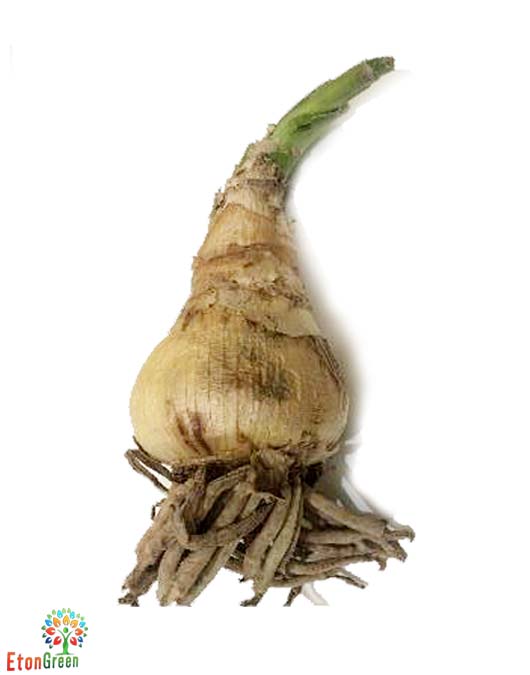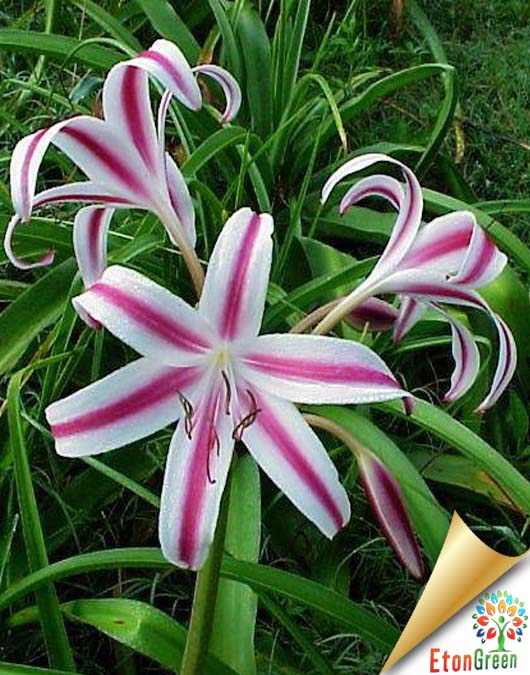-
EtonGreen Sunflower Large Bloom - Flower Seeds (Pack of 2)
₹120.00₹100.00
EtonGreen Tithonia Torch Red Flower Seeds
₹130.00 ₹70.00
- Shipping charge ₹ 90 for Entire order.
- Tithonia Torch Red Care
- Choose a warm, sheltered location when growing plant
- The vining varieties require a support structure as some can get 15 feet tall
- All plants prefer sun to light shade sites with well-draining and moderately fertile soil
- Install the plant in the ground at the same level it was growing in the nursery pot
-
Planting And Care
- Before winter, add 4 to 6 inches of mulch, simply to delay the ground freeze and allow the roots to keep growing
- Leave the mulch until spring once the last hard frost has passed
-
Tithonia Torch Red Special Feature
Tithonia are grown from seed. In colder, northern areas, you may want to start them indoor In warmer climates, they can be started outdoor Keep soil moist until seeds have sprouted.
5 in stock
It is also known Mexican Sunflower.
These were a wonderful addition to the back of our garden this year. I have put them in arrangements with zinnias and bachelor buttons and they look great.
| Weight | 0.100 kg |
|---|---|
| Dimensions | 10 × 10 × 25 cm |
Up sells product
- Shipping charge ₹ 90 for entire order
- These plants are perennial herbaceous bulbous plants. They generally have large fleshy bulbs. It is a plant with strap-shaped, glossy, green leaves and producing few large funnel-shaped flowers on a stout stalk, from March-May This plant is very suitable for planting in border, shrubbery and in a pot.
- The amaryllis lily is mainly used for ornamental purpose in garden, terrace, balcony, patio, etc.
- Common name: Hippeastrum
Color: The usual color is white with crimson veins, but pink or purple also occur naturally.
Bloom time: Late December until the end of June.
Height: 24 in/60 cm.
Difficulty level: EasyPlanting & Care
Amaryllis like their soil rich, but exceptionally well-drained, so ideally create a mix from one part well-rotted manure, one part horticultural grit or sand, and two parts leaf mould. Two-thirds good compost mixed with one-third grit also does fine.Sunlight: Full sunSoil: Well-drained soil.
Water: Keep soil moist throughout the growing season.
Temperature: 20°C
Fertilizer: Apply any organic fertilizer.
Harvesting: After the amaryllis has stopped flowering, it can be made to flower again. Cut the old flowers from the stem after flowering, and when the stem starts to sag, cut it back to the top of the bulb. Continue to water and fertilize as normal all summer, or for at least 5-6 months, allowing the leaves to fully develop and grow. When the leaves begin to yellow, which normally occurs in the early fall, cut the leaves back to about 2 inches from the top of the bulb and remove the bulb from the soil. Clean the bulb and place it in a cool (40-50 deg. F), dark place such as the crisper of your refrigerator for a minimum of 6 weeks. Caution: Do not store amaryllis bulbs in a refrigerator that contains apples, this will sterilize the bulbs. Store the bulbs for a minimum of 6 weeks.
Care:
- Once the plant is flowering, continue the watering and keep it out of direct sunlight, and slightly cooler (10-15°C), but as light as possible to promote a longer flower life.
- Each individual flower should last two or even three weeks before they brown.
- As each one fades, cut it off at the top of the stalk and then when the whole stalk is over and begins to sag, carefully cut it off just above the bulb nose.
- After flowering you can keep them from one year to the next.
- Feeding needs to continue and you want to water too, until the leaves begin to yellow in late summer/early autumn.
- At this stage, cut the leaves back to about 6cm (2½in) from the top of the bulb and remove it from the pot.
- Keep the bulb cool (5-10°C) and dark, to give it a dormant period for 8 weeks before you can encourage it to come into leaf and flower again When the temperature in your greenhouse falls to below 10C, bring them into the warmth and begin gentle watering again and your bulb will re-shoot.
- Don t re-pot it for the first couple of years; it hates root disturbance.
- The older and bigger the bulb, the more flowering stems you’ll get, so it’s worth the trouble of nurturing these mini football bulbs.
- Bulbs older than two years will produce offset bulblets.
- These may be left attached to the mother and re-potted with her, creating an amazing show, but its best to remove them carefully just before you replant and put them in their own individual pots.
- These little bulbs will take two years before producing their first flower, but it will be a proud moment when they do.
- Shipping charge ₹ 90 for entire order
- Crinum lilies (Crinum spp.) are large, heat and moisture loving plants, producing an abundant array of showy flowers in summer.
- This crinum typically blooms in July, with slender-petaled, fragrant white flower that is highlighted with long, wine red stamens. They are unusual, looking like nothing else in the garden. Crinum leaves are basal, typically long and strap-shaped.
-
Planting And Care
- Protect from winter wet
- Generally disease and pest free
- In fall before the first frost, dig dry and store bulbs for winter in a cool, frost-free location in a medium such as peat or vermiculite that is given minimal moisture
Crinum Lily Care
- Plant 10 cm deep in any moderately fertile, moist but well-drained soil
- Bulbs should not sit in water, the soil should drain well
- Plant the large bulbs in full sun or filtered light in early spring
- Each bulb needs to be planted right side up
- The more pointed end is considered the top
- Plant each bulb in a hole that is just deep enough that its neck is protruding from the soil and the bottom of the bulb is covered in soil
- Covering the entire bulb with soil and planting too deep discourages flowering
- Space bulbs at least 8 inches apart and water the planting site or container well after planting
- Shipping charge ₹ 90 for entire order
- Crinum lilies are large, heat and moisture loving plants, producing an abundant array of showy flowers in summer.
- Lilly like their soil rich, but exceptionally well-drained, so ideally create a mix from one part well-rotted manure, one part horticultural grit or sand, and two parts leaf mould. Two-thirds good compost mixed with one-third grit also does fine.
-
Crinum Planting Procedure:
- Each bulb needs to be planted right side up
- The more pointed end is considered the top
- Plant each bulb in a hole that is just deep enough that its neck is protruding from the soil and the bottom of the bulb is covered in soil
- Covering the entire bulb with soil and planting too deep discourages flowering
- Space bulbs at least 8 inches apart and water the planting site or container well after planting
- Plant the bulb, or place the potted bulb in a warm place with direct light since heat is necessary for the development of the stems.
Related products
- Images are for reference purposes only. Actual product may vary in shape or appearance based on climate, age, height, etc
- Shipping charge ₹ 90 for Entire order.
- Easy to Grow – Can be grown in indian climate/weather conditions. Do not use for food, feed, or oil purposes, Seeds are only for Agriculture and plantation purpose.
- Best Suitable for Terrace Gardening, Grow bag cultivation, Kitchen Gardening, Terrace Gardening and Roof Top Balcony Gardening.
- Organic Black brinjal seeds hybrid seeds
- Black brinjal seeds ideal for home garden
- Brinjal Black Beauty seeds hybrid for all seasons
- Brinjal Black Beauty vegetable is very easy to grow in your kitchen garden, terrace garden, in balcony or in rooftop garden.
- Shipping charge ₹ 90 for Entire order.
- Capsicums are cultivated worldwide and used in many cuisines.
- They are low in calories and exceptionally rich in vitamin C and other antioxidants, making them an excellent addition to a healthy diet.
- Safe Packaging and Secure Delivery all across India
- Shipping charge ₹ 90 for Entire order.
- Package Contanis :- 2 packet
- Water generously for the first few days.Water well throughout growing season, about 2 inches per week during the summer. Keep watering consistent!
- Sowing season:All seasons.
- Mode of sowing: Sow the seeds 0.5 cm deep in a seedling tray / Container / Pots. Transplant in 30 to 35 days.
- Germination Time : 6 to 8 days from sowing.
- Harvesting: 90 – 100 days from transplanting.
- Shipping charge ₹ 90 for Entire order.
- For Quick, better germination sow seeds with extra care, not fully inside-partial cover and less water always – During Summer Partial Sunlight and During Winters Morning Day sunlight is good for good germination
- Easy to use and grow Picture is an indication of type only
- You may sow the seeds 2-4 inches in soil from the surface; sprinkle water from the first couple of days and they are crucial for germination of seeds; the seeds take about 15-18 days to germinate and moving on you shall get good results
- Best Suitable for Terrace Gardening, Grow bag Kitchen Gardening, Terrace Gardening and Roof Top Balcony Gardening
- Shipping charge ₹ 90 for Entire order.
- Zinnia Liliput Most suited as cut flower.
- Plant Height: 45 cm, Flower Size: 4-6 cm across
- Sowing distance: 40 cm Plant to Plant,
- Best for: Bed sowing/Pots, Sowing method: Seedling.
- Images are for reference purposes only. Actual product may vary in shape or appearance based on climate, age, height, etc



















Reviews
There are no reviews yet.